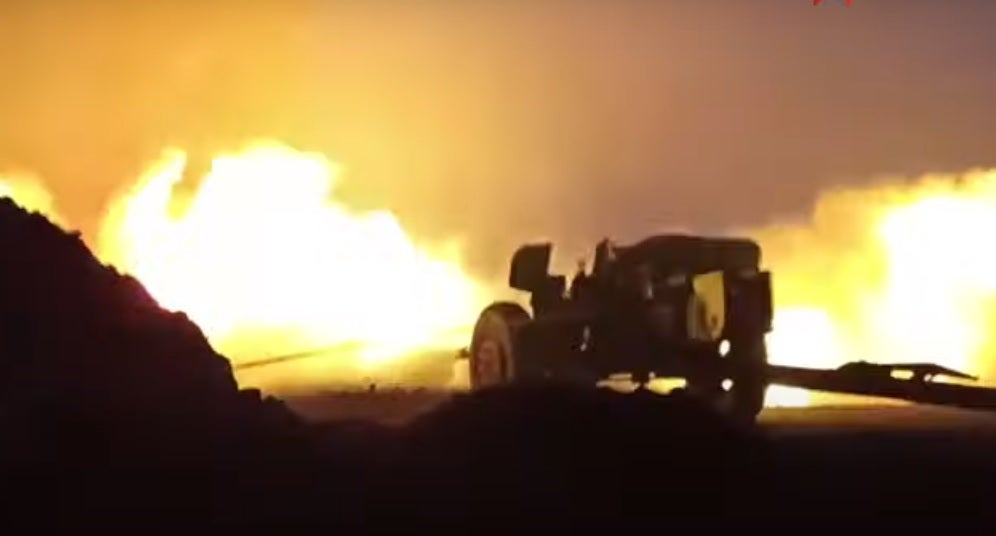How Do Russians Put Out An Oil Fire? With An Anti-Tank Gun, Of Course!
After conventional methods failed Russian troops deployed an unusual and rather spectacular tactic to deal with an oil well fire that had been raging since 30 May at a remote Siberian field operated by the Irkutsk Oil Company (IKC).
The fire in the Yarakta oil field, which is about sixty miles (100 kilometres) from the nearest village and posed no threat to life, started when a hose came loose and sprayed oil and gas onto a junction box.
According to the Siberian Times, the company was unable to control the blaze and asked the Russian army to provide artillery support with the intention of damaging the wellhead structure, obstructing the flow and allowing the workers to extinguish the fire and cap the well.
The Russian army promptly flew in soldiers to assist, bringing with them the perfect weapon for delivering accurate fire; an MT-12 Rapira anti-tank gun.
The Rapira is a 100mm smoothbore gun that entered service with the Soviet army in 1970. It fires a range of kinetic and chemical warhead projectiles and has seen combat service in a number of conflicts around the world, including an unconfirmed report of one knocking out two M1 Abrams in Iraq in 2003.
Though most nations have long abandoned the anti-tank gun in front-line service, the Russians continue to use the MT-12s and even update them periodically.
The gun proved perfect for its new fire-fighting role. Placed 180 metres from the burning well, the crew were able to fire several shots into the structure, knocking the wellhead from the rest of the structure and allowing personnel to finally extinguish the blaze, which had been burning for ten days. Lucky this was all captured on camera. No-one was hurt by the fire and a representative form IKC thanked the Russian military for their assistance in solving the problem.

